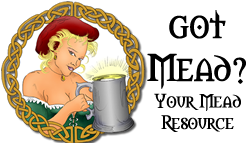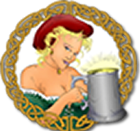I was reading a forward email which I just usually delete?
Thought you all might enjoy this...
"It was the accepted practice in Babylon 4,000 years ago that for a month after the wedding, the bride's father would supply his son-in-law with all the mead he could drink. Mead is a honey wine and because their calendar was lunar based, this period was called the honey month, which we know today as the honeymoon."
Thought you all might enjoy this...
"It was the accepted practice in Babylon 4,000 years ago that for a month after the wedding, the bride's father would supply his son-in-law with all the mead he could drink. Mead is a honey wine and because their calendar was lunar based, this period was called the honey month, which we know today as the honeymoon."





